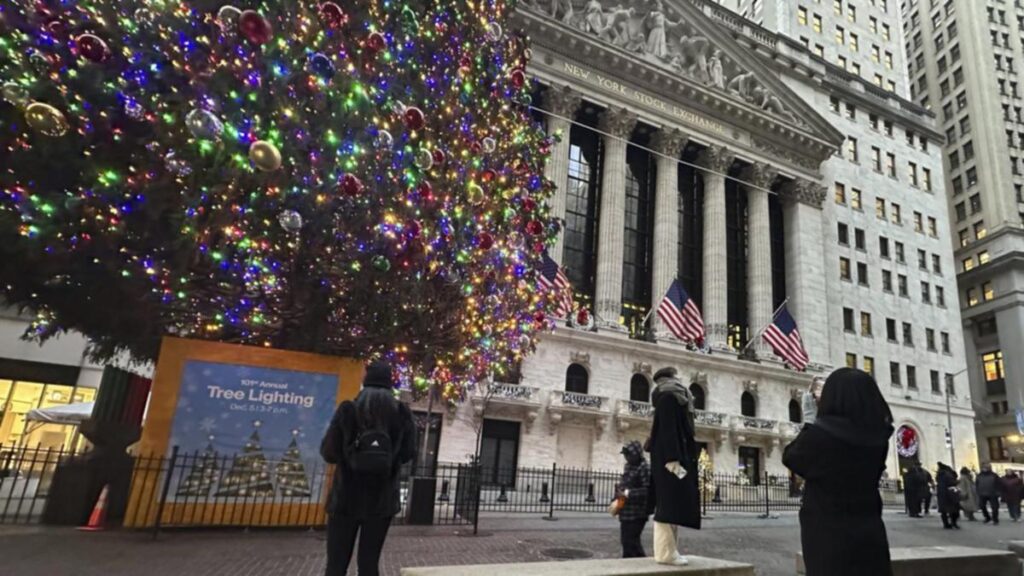Wall Street’s holiday cheer ended abruptly on Friday, with all three main benchmarks closing lower in a broad-based sell-off affecting even tech and growth stocks that had driven markets higher through much of the shortened trading week.
The decline ended the Dow Jones Industrial Average’s five-session winning streak that had followed a 10-session decline, its worst losing stretch since 1974.
According to preliminary data, the S&P 500 lost 65.34 points, or 1.08 per cent, to end at 5,972.25 points, while the Nasdaq Composite lost 294.69 points, or 1.47 per cent, to 19,725.67. The Dow Jones Industrial Average fell 321.73 points, or 0.74 per cent, to 42,992.58.
“Today feels like there is quite a bit of profit-taking across the board,” said Michael Reynolds, vice president of investment strategy at Glenmede.
“We are more than two years into a pretty strong bull market … so it’s really not surprising to see some people taking their profits and rebalancing their portfolios ahead of the new year.”
The sell-off thwarted the seasonal Santa Claus rally, in which stocks traditionally rise during the last five sessions of December and the first two of January. Since 1969, the S&P 500 has climbed 1.3 per cent on average, according to the Stock Trader’s Almanac.
Thursday’s session hinted at momentum stalling, with both the S&P 500 and Nasdaq posting marginal losses to end multi-session winning runs.
Rising US Treasury yields had been catching investors’ attention, with the benchmark 10-year note hitting a more than seven-month high in the previous session. The yield hovered close to that mark on Friday, at 4.62 per cent.
Higher yields are seen as hampering growth stocks, as they raise borrowing costs for business expansion. These stocks, especially the so-called Magnificent Seven technology megacaps which had been key drivers of the market’s 2024 rally, were also caught up in Friday’s sell-off.
For the second successive day, Tesla led decliners among the group.
“We have a higher cost of capital whenever rates go up like this, and they have gone up pretty significantly over the last month or so,” said Glenmede’s Reynolds.
“Investors may just be reassessing the bets they are taking when the cost of capital is higher, perhaps looking at some of the valuations on the Mag 7 and wondering whether they can find better value elsewhere.”
Most of the 11 major S&P sectors fell. The worst performers on Friday were the three indexes which have been 2024’s leading lights: consumer discretionary, information technology and communication services.
Despite Friday’s travails, all three indexes recorded weekly gains.
News events helped some stocks to buck the market sell-off.
Amedisys gained after the home health service provider and insurer UnitedHealth extended the deadline to close their $US3.3 billion ($A5.3 billion) merger.
Lamb Weston climbed after a filing showed activist investor Jana Partners is working with a sixth executive to push for changes at the French fry maker, a move which could result in a majority of the company’s board being replaced.
Trading volumes in this holiday-shortened week have been below the average of the last six months and are likely to remain subdued until January 6. The next major focus for markets will be the December employment report due on January 10.
https://thewest.com.au/business/markets/wall-st-closes-lower-at-end-of-holiday-shortened-week-c-17232236


